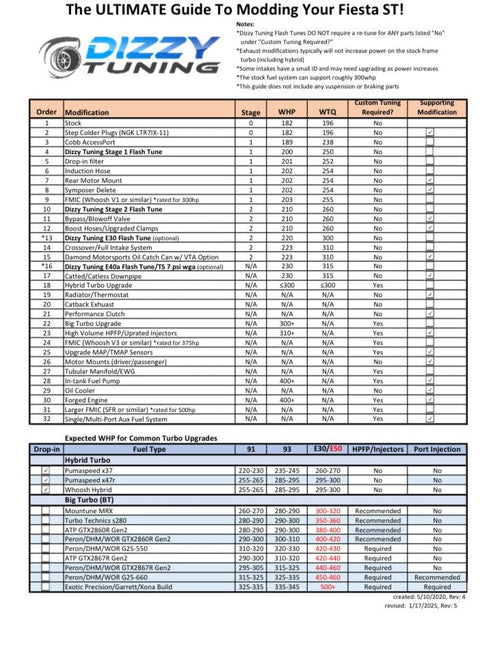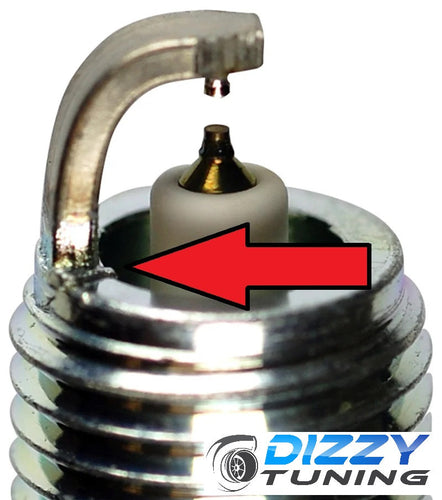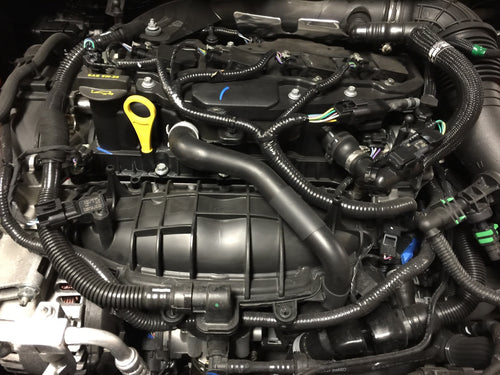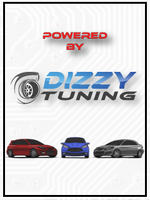Fiesta ST - Bosch 30% Uprated Injectors (Part 1)
- on October 06, 2020
- Categories: Tech Articles
BOSCH UPRATED INJECTOR/XTREME-DI HPFP35 TUNING SUPPORT NOW AVAILABLE!
A few weeks ago, I installed the Bosch 30% uprated injectors in the Fiesta ST for testing. The goal was to first test the injectors only (without a HPFP upgrade), to see if it was a worthwhile modification on its own.
Testing in that regard is complete, and I have since installed the HPFP. In doing so, my OEM clutch has begun slipping again, so I am planning to install that next week. The dyno has also been installed at the local shop, and I am letting them catch up with customers that were on hold, and then should be able to get in after the clutch install. I’m hoping in 2-3 weeks to have confirmed numbers for this setup.
Are the uprated injectors worth installing, without an upgraded HPFP? The short answer is NO. As with most performance upgrades, when you strengthen one component, it can sometimes cause undue stress on other components. Every action has a reaction.
It appears the next weakest component is indeed the OEM HPFP. I started experiencing heavy fuel rail pressure (FRP) losses at boost levels that I normally would have been able to run on the OEM injectors. The best analogy that I can give is to think of the fuel system as a garden hose, with a spray gun installed (with one of those rotating ends, so you can change the spray pattern). The water line in your home (leading up to the spicket) is the fuel rail, and the spray gun is the injector. If you are spraying a fine mist of water (using very little water), the pressure in the water line stays fairly stable. But if you were to switch to a “soaker” mode (or one where it uses much more water), the pressure in the water line will drop significantly. You may not notice this, or it may not ever be a concern, as pressure is much less important here. But in a performance engine, where fractions of a second count, recovery times are everything.
I did try testing various rail pressures, to see if it would help recovery times. This did help to an extent, but not to the point where the pressure was no longer dropping to an unsafe level. It was at this point I concluded the uprated injectors were not a worthwhile modification on their own.
Below is an example of the OEM fuel system making 300whp, compared to the new uprated injectors making roughly the same power. You can see that AFR does stay on target and does not trend lean like the OEM injectors. THESE CONDITIONS WERE RAN ON OUR TEST VEHICLE, AND I WOULD NOT RUN AN AFR THIS LEAN ON A CUSTOMER CAR. You’ll also notice that I did have to reduce torque in the lower RPM, as this was causing some of the pressure loss that I spoke about above. Another downside to the injectors, without a pump upgrade.

Here is a graph showing boost and fuel rail pressure on the above “uprated injectors” run:

Since AFR was staying fairly stable, I did try testing higher boost levels. As expected, this did increase power but at the expense of further fuel rail pressure losses. Here is that run compared to the same "oem fuel system" run:

And again, boost and fuel rail pressure shown:

Something we can take away from this experiment is that even though fuel rail pressure dropped over 1,000 psi below target pressure, AFR still stayed stable. I think this may be a bit of a wake-up call to anyone running these injectors (without the HPFP upgrade). I highly recommend monitoring "FRP Actual", to make sure it is also staying stable during wot.
In Part 2, I will discuss both the advantages and limitations of the injectors, in combination with the Xtreme-DI HPFP upgrade.








